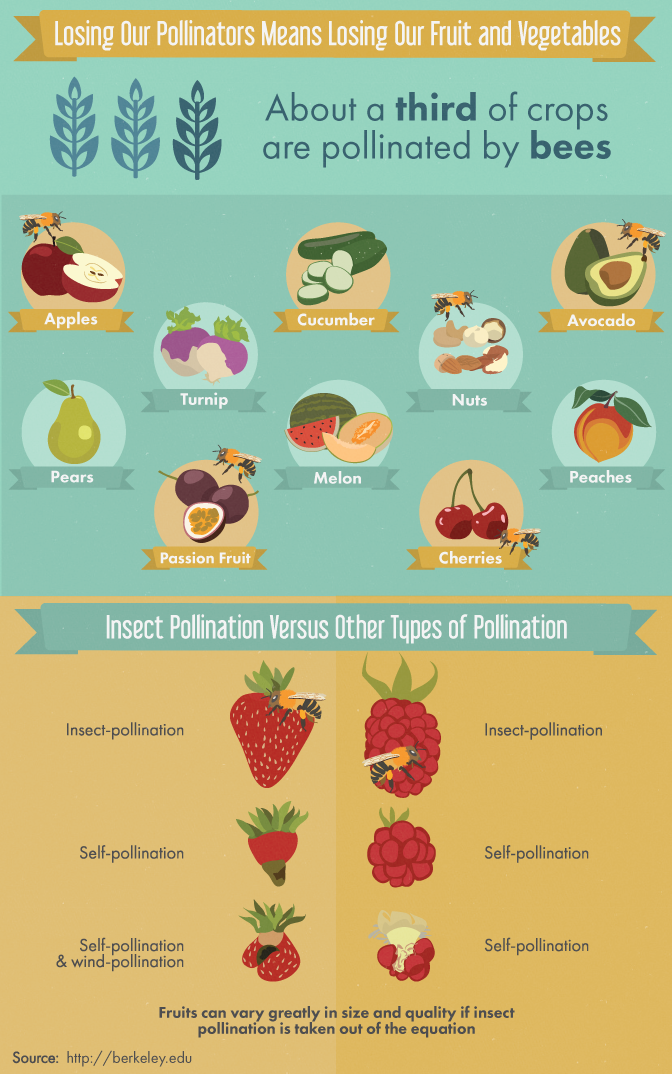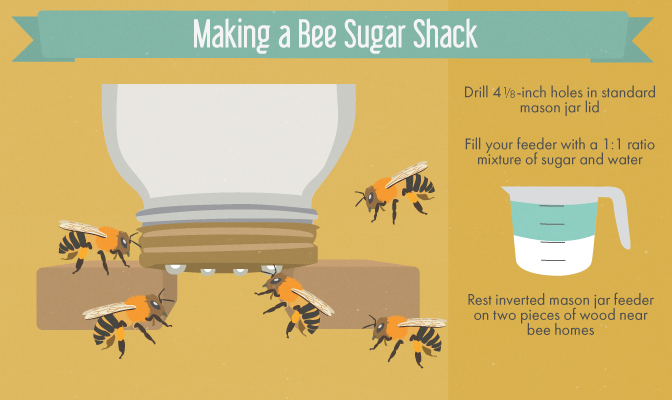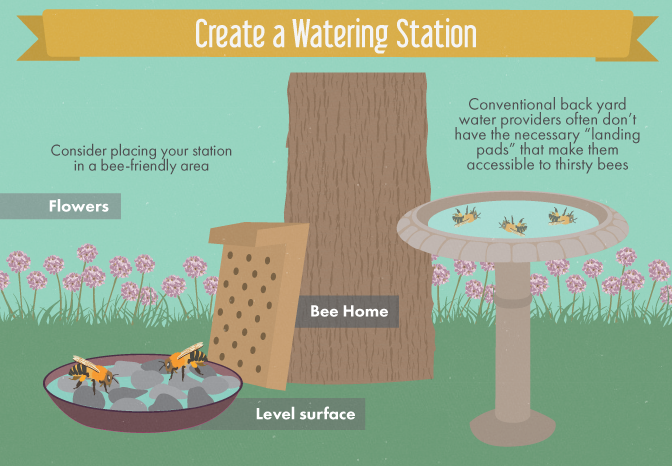

In our last article on the subject of Colony Collapse Disorder (CCD), we discussed how flower choice can make a huge difference to the number of pollinators visiting your garden. Another practical way to help restore bee colonies in your area is to create a bee-friendly garden. By providing shelter, food, and water, you can help the bees in your neighborhood to thrive.
Creating Homes for Your Honeybees
You don’t have to keep a hive to have a healthy bee population around your home. Not all bees live in large colonies – in fact, many species of bumblebees and honeybees live solitary lives.2 You can make these loners feel at home in your garden by creating a little BB&B (bee bed and breakfast)! This will also prevent these pollinators from boring into your carpentry or nesting too close to where you live and play.
When selecting a location for your bee haven, be sure to pick a place away from human activity where bees could cause injury. Place all bee homes where they won’t be disturbed by pets or children.
Bee board: Take an old piece of lumber and drill holes up to half an inch wide into the board.3 Ensure that the lumber has not been treated with chemicals. Now find a sunny spot in the garden like a tree or a fence post where it’s dry and cool in the winter. Make sure that your bee board is sheltered from the rain. If you don’t have a suitable place, use another old piece of lumber to create a little roof to keep your bees dry.
You can further protect the bee larvae by bringing the bee homes into your garage or shed in the winter to prevent them from getting wet. Be sure to store them in a cool, dry place. If you have woodpeckers, protect the bee board with chicken wire so that they can’t peck out the bee larvae.
Stick homes: While bee boards work fine, bees are far more partial to nesting in little tubes. You can use hollowed sticks that have been thoroughly dried and are free of chemicals. Bundle the sticks together and hang in a dry, sunny spot in the garden. If you have an old shelf, you can stack the bundles so they are protected from the rain, or you can fashion a roof from a piece of old lumber to keep your bees dry.
Bamboo bee home: Another great way to provide shelter for bees is to use bamboo. Mason bees are particularly fond of bamboo nests and are among the busiest pollinators. You can get bamboo from any local garden store. Cut the bamboo into six-inch lengths and make sure they are hollowed out. Use a chopstick to remove any debris or vegetable matter that is blocking the tube.4
Place the bamboo bee’s nest three to six feet off the ground in a warm, sunny spot that is protected from the rain.5 Tree branches or rafters work best, but if you can’t find a dry spot in your garden, take an old tin can and drill a hole in the bottom. Now use a screw to secure the can to a wooden fence post, to a shed or tree or the side of your home. Place the bamboo pieces in the tin can and you have the perfect bee home.

Bee Feeder
Your bees may emerge from their winter hibernation well before there are enough flowers for them in your garden. If this is the case, you can easily keep them well fed by creating a DIY Mason jar feeder. Use a medium-sized Mason jar with a metal lid. With a 1/8-inch nail, make four holes in the lid.6 Ensure that the holes are small enough to let the liquid drip out very slowly and just big enough for a bee tongue to fit in. Fill the jar with a water and sugar syrup mixed with a 1:1 ratio. Place the jar upside down, resting on two pieces of wood on top of your bee house, so your favorite bugs have easy access to their bee café.7

Sources of Pollen
Another thing your bees need in order to feel right at home is a source of pollen. Most flowering plants will provide pollen for your bees, but bees are especially fond of flowers in the blue to purple range, as well as white and yellow bouquets.8
Make sure your bee buffet is always stocked by planting different crops that flower throughout the spring and summer. Flowering fruit trees and vegetables are also bee favorites: fruit and berry flowers provide pollen in the early season, while squash and pumpkins are good choices for later in the summer.
See our complete guide to gardening and planting for bees for more information on perfect flower selection and other practical tips.
Hydration Station
Bees also need an accessible source of water. The best option here is to fill a shallow bowl or drip tray in the morning with an amount that will evaporate by early evening. Place a few rocks in the tray so the bees have a safe place to land. This is important, because often backyard sources of water contain no landing pads, and as a result bees crash land and drown, or pass up the water source entirely. Replace water daily and leave the tray at ground level near your bee homes and flowers.

As research on what’s happening to our bees continues to emerge, it’s easy to feel powerless about fixing the problem. But by observing sound planting policies and a few easy green DIY tips, you can make your garden an oasis for our pollinators, who currently need all the help they can get from us!

Sources:
Original article and pictures take http://www.fix.com/blog/creating-a-bee-friendly-garden/ site
Комментариев нет:
Отправить комментарий